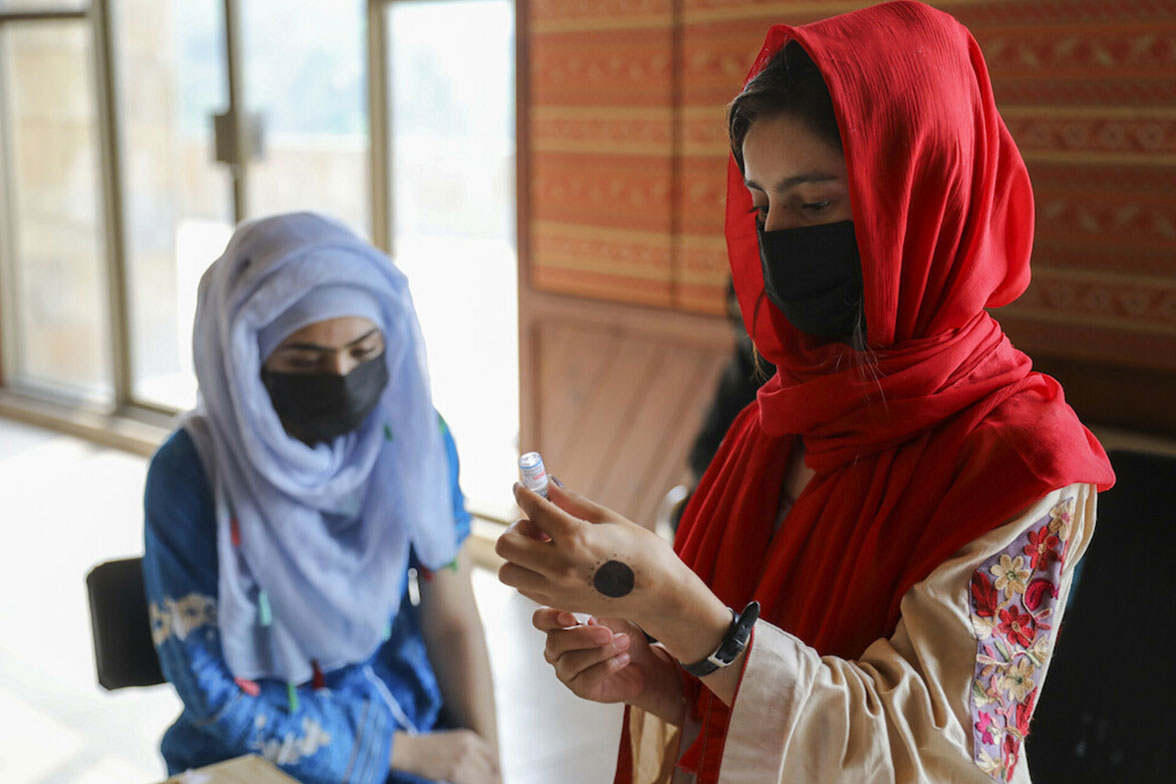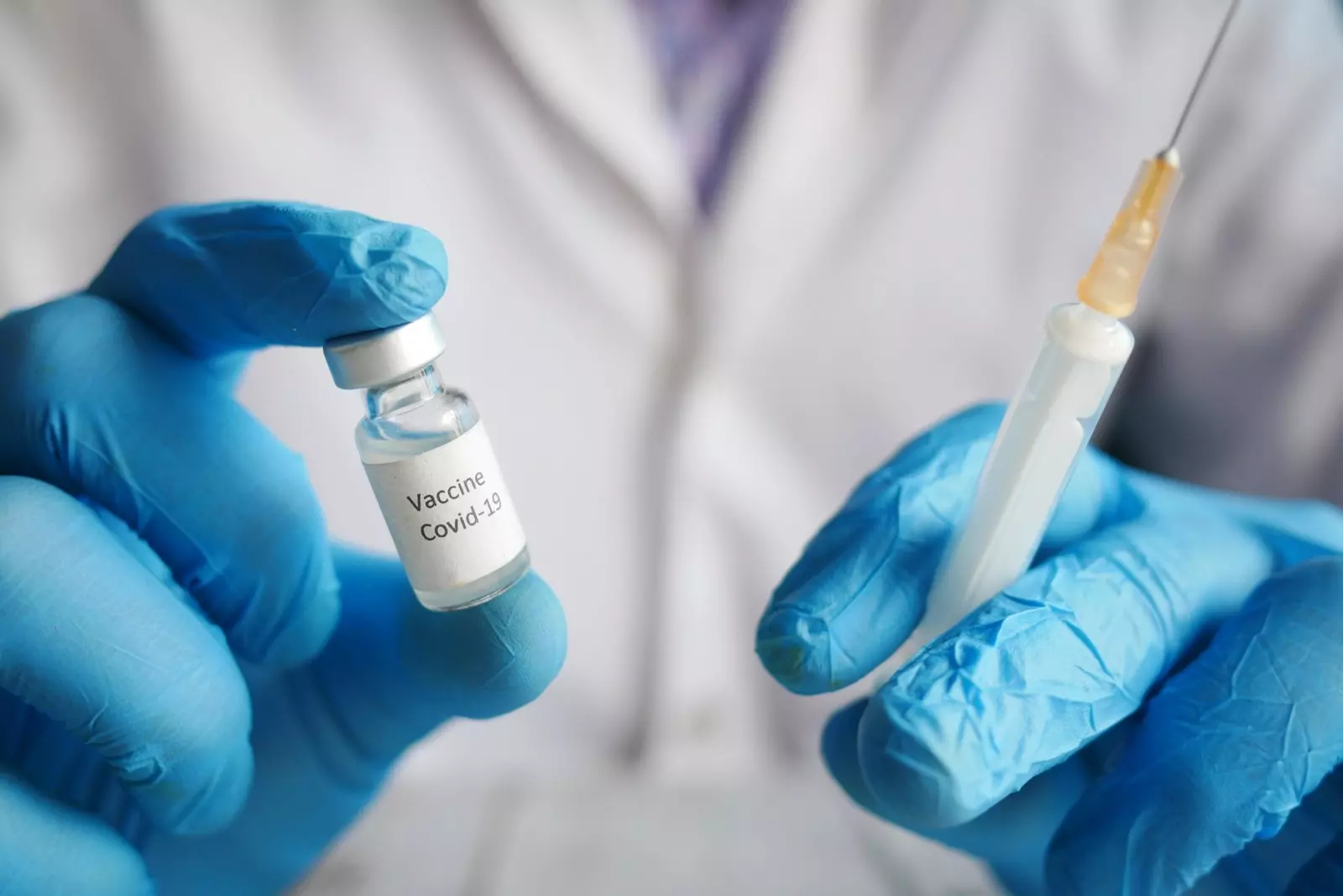Without global vaccination, all COVID immunity is at risk
A year from now, instead of potentially entering the pandemic endgame, we could find ourselves at the start of a new and perpetual cycle of revaccination or boosters for people who have already previously been protected.
- 1 November 2021
- 5 min read
- by Dr Seth Berkley , The Hill

President Biden has declared that to vaccinate the world "we need to go big." I couldn't agree more - but that means we need to move faster than we have to date, or even his target of fully vaccinating 70 percent of the world by this time next year won't be enough.
We still don't really know what herd immunity looks like for COVID-19, but we do know that unless we start to make these vaccines immediately more available to people in lower income countries, not only will this target be difficult to achieve, but, given that vaccine immunity may wane over time, it risks undermining its impact.
Protecting more people will save more lives and should help reduce transmission, but it's important to remember that it is still not clear how long COVID-19 vaccines remain effective. That means, the sooner they reach people in all corners of the world, the greater their overall, long-term impact. Because if people in poorest countries continue to be left out and don't get access to these vaccines until the very end, then by the time we reach this target, which the World Health Organization has also called for, we could start to see protection wane in other regions.
The point is that we don't just need to get 70 percent of the world fully vaccinated: To have the most impact, ideally, we also need 70 percent protected at the same time.
Have you read?
The danger here is that leaving large populations around the world unprotected, waiting for natural immunity to slowly build, allows time and opportunity for the virus to continue to circulate and increases the risk of new and potentially more dangerous variants emerging. It would mean that a year from now, instead of potentially entering the pandemic endgame, we could find ourselves at the start of a new and perpetual cycle of revaccination or boosters for people who have already previously been protected.
To avoid that, we need to be smart and take a phased approach. Until now, governments have tried to tackle the pandemic at the national level, striving to achieve high vaccination coverage within their own borders, which has only prolonged the pandemic. But now, instead of trying to extinguish this global inferno one country at a time, we have to start simultaneously stamping it out all across the world. That means focusing all efforts on building up global coverage by vaccinating people everywhere who are still unprotected, in particular getting first doses out to people most at risk, such as health workers, the elderly and other vulnerable people.
With 1.5 billion doses of COVID-19 vaccine now being produced every month, there should be enough vaccines to make this happen, with global production expected to reach 12 billion doses by the end of the year - enough to protect every adult on this planet. But one look at the global distribution of COVID-19 vaccines and it's clear we are still a long way from that. While some high-income countries have already protected nearly 70 percent of their population, only 2.5 percent in the very poorest low-income countries have been protected.
COVAX was created to address precisely this by making access to people in all countries equitable. Despite unprecedented challenges, we have delivered more than 361 million doses to 144 economies, the majority going to people in the 92 poorest nations. And by the end of the year, we hope to have made 1.4 billion doses available, increasing to 4.4 billion through 2022.
However, we have faced, and continue to face, ongoing obstacles, with wealthy countries monopolizing global supply, while export restrictions hinder the free flow of vaccines, and the vital components and materials needed to make them. Manufacturers have also experienced problems. All this has created delays and slowed progress, which is one reason why there are still such huge and unacceptable global disparities. And now, global supply could be hit further as some wealthy governments start to introduce booster shots for low-risk people who are already fully vaccinated, despite a lack of firm evidence to support their use right now.
The world needs this new U.S. initiative to succeed. But to do so, equitable access and getting first doses out to the poorest countries must become the immediate and number one global priority. Some governments, including the United States, have already helped by generously committing funds and providing more than 1.3 billion doses to lower-income countries through COVAX. But if the world is to make the most impactful use of the doses produced, we need many more and we need them now.
Many wealthy countries now have significantly more doses than they need to fully vaccinate their entire adult and teenage populations. We need those surplus doses and we need them to arrive with long enough shelf-lives so that lower-income countries can make the best use of them. Governments can also help by immediately removing all export restrictions and by giving up their place in the production supply lines to COVAX, particularly those countries with orders that they cannot use in the immediate term. We also need them to support our call on manufacturers for greater transparency on their order books and delivery timelines, to create a more level playing field and ensure the poorest countries don't keep getting pushed to the back of the line.
That will be key if we are to reach this global target and bring an end to this pandemic. Getting to 70 percent fully vaccinated one year from now would be an incredible feat to pull off - after all, in some countries that would mean vaccinating children under five - but this global push is precisely what the world needs, and therefore warrants its support.
But it can only succeed if we first narrow the global vaccine divide and do so immediately. Because if people in these countries continue to be pushed to the back of the line, the pandemic could continue to rage on.
More from Dr Seth Berkley
Recommended for you








